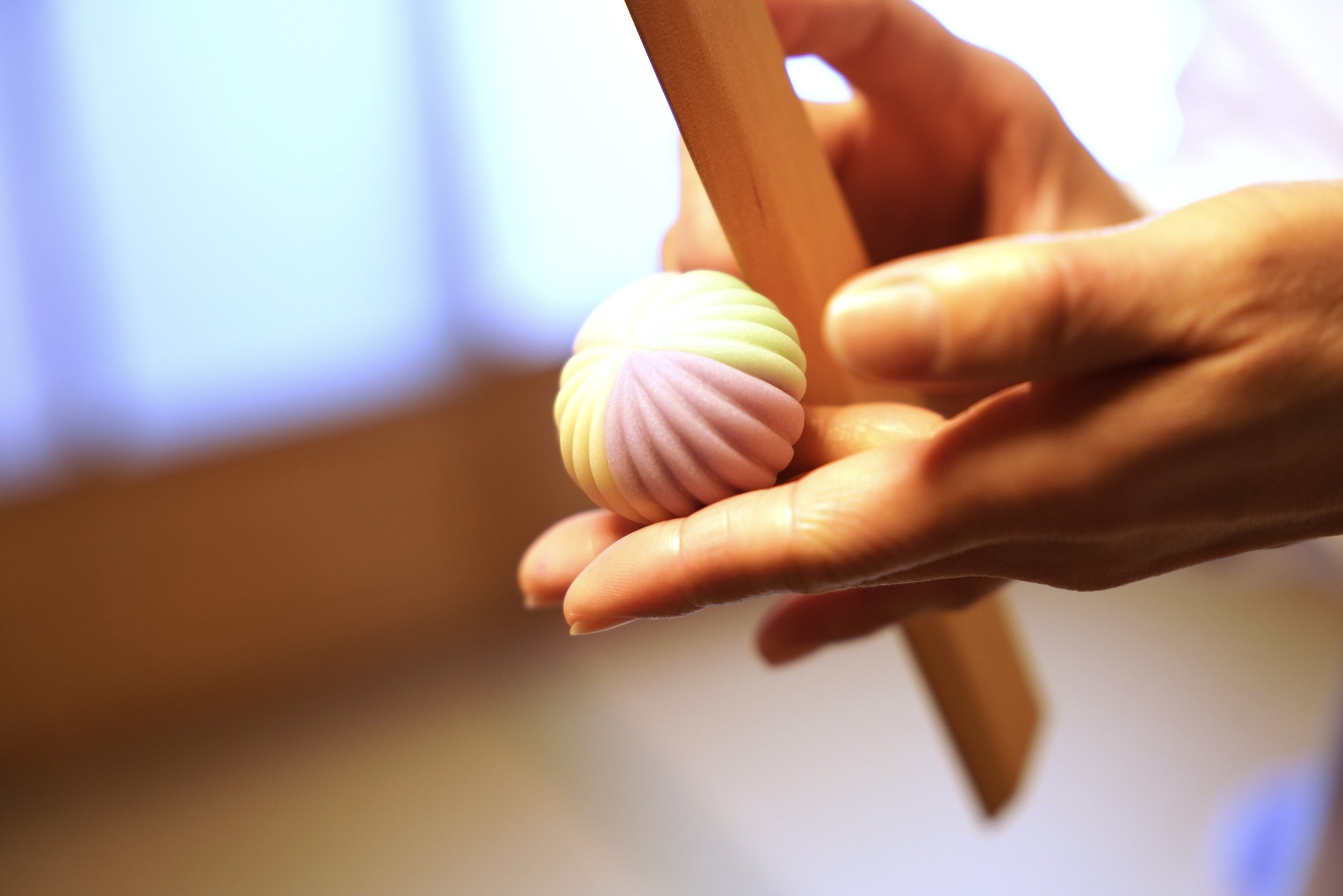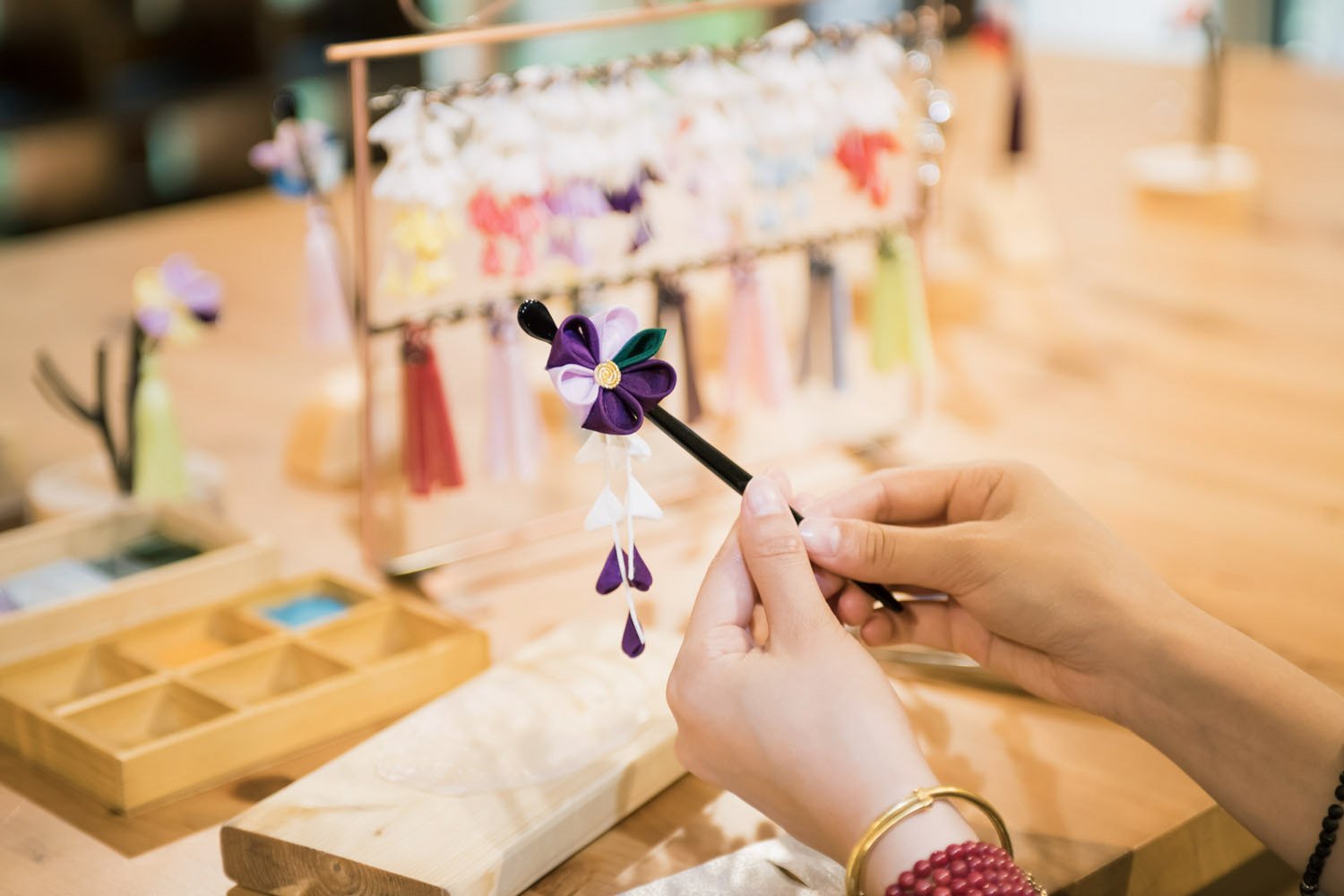The Advent of Omiyage and its Transformation through Time
By Taylor Bond
In Japan, every domestic trip ends in this—stacks of intricately designed boxes, decorated with local insignia and artfully arranged at the entrance to the train station; glass jars brimming with regional jams and sauces bottled at the height of the season, a sample of each laid out before the display and wafting a heady and tantalizing aroma; artisanal, hand-crafted items steeped in cultural history and created using techniques preserved from generation to generation. Perhaps overwhelming, omiyage are a ubiquitous element of travel culture within the country, with a careful checklist of the gifts planned for friends, family, and coworkers upon a traveler’s return. With its near-ritual status, omiyage are integral to contemporary life and travel in Japan, a tradition harkening back to its sacred origins.
On a surface level glance, many mistakenly assume that omiyage is nothing more than a direct translation of “souvenir”—a French term meaning “to remember”–that, in modern utilization, connotes of kitsch and pales in comparison to the rich cultural nuance woven into the very fabric of omiyage’s meaning. Lacking in this conception is a genuine connection to the local culture or a tangible thread tying item to place.
Consider the following omiyage: a box of Nanbu senbei rice crackers purchased in Iwate Prefecture. A traditional snack with each portion individually wrapped, the omiyage is packaged to encourage sharing among a large number of colleagues, friends, or family. Often perishable in nature—a parallel to Japanese food culture which divides the year into 72 microseasons, preparing dishes using only ingredients at the height of freshness—most omiyage are intended to be consumed within an exacting timeframe.
Japanese anthropologist Nitta Fumiteru classifies omiyage as "local specialties purchased as gifts for families and friends at home.” In contrast to a souvenir intended for a traveler to encapsulate a memorable trip into an object, omiyage are not physical reminders of travel. Rather than hidden in a closet collecting dust until the next bout of vacation nostalgia hits, they are regionally-specific products designed to be shared.
Within this framework are the essential components that contribute to the emotional verisimilitude of omiyage—locality and family. At its core, omiyage is a token signaling thoughtfulness, a sign that even among your hectic travels, you carried thoughts of the people waiting at home with you. It is when we consider this contemporary definition through the lens of Japan’s ancient practice, however, that we can see the true historical and spiritual depths to the omiyage gift-giving culture that endure even today.
Trekking through mountains on sparsely marked paths for weeks and even months, a pilgrimage to the Ise Grand Shrine would have been arduous before the advent of high-speed transportation. A grueling journey to one of Japan's most significant Shinto sites, it was one that eager pilgrims gladly partook in. After all, the chance to visit the holy spot at least once in their lives was more than worth any struggle. Finally arriving at their destination and completing their spiritual practices, guests would gather amulets and items of religious significance to carry back to their village, believing the protection bestowed upon pilgrims would transfer to these traditional gifts, as well.
While the exact era of their origin remains uncertain, the occurrence of pilgrimage trips in the Heian era (785-1185 CE) is thoroughly documented in both official documents and published literature. The internationally-renowned Genji Monogatari, or The Tale of Genji, often described as the world’s first novel, is one such example—another being the private diaries of noblewomen, which also recorded the numerous shrine pilgrimages of the era. Pilgrims did not travel exclusively to the Ise Shrine—in fact, pilgrimages to Buddhist temples were just as common, if not more frequent. However, the Ise Grand Shrine remains as a singular, spiritual location in Japan, characterized by linkages to both mythic and imperial history and consecrated in the name of the Sun Goddess Amaterasu, reputed to be a direct ancestor of the Emperor.
The phrase “it takes a village” proved no mere metaphor in the accomplishing of a pilgrimage. To send off even just a single shrine pilgrim successfully, the entire local community would prepare senbetsu, or a send-off allowance, so that the selected traveler could reach the shrine on their behalf. Members of the local area would scrimp and save, offering up their own personal funds. In exchange for their much-appreciated contributions, the returning pilgrim would arrive home laden with a host of gifts: omamori good luck charms purchased directly from the shrine, an assortment of rice cups, and other items of religious significance. These small items were known as miyage, which literally means “shrine box” and showcases the spiritual significance with which omiyage was imbued from the start.
In the Edo period (1600-1868), the number of shrine-goers boomed, particularly to places like the 88 Temples of Shikoku, Mt. Fuji, and most notably, Ise Shrine. As a result of alternate attendance, a mandated practice where regional daimyo lords were required to split their time between the capital of their own domain and the new shogun capital of Edo, the economy improved, highway systems developed, and traveling large distances became more streamlined. With large numbers of people now traveling back and forth from all corners of Japan, travel-related art and literature became notably popular. Travel diaries captured the charm and characteristics of different regions, while capturing famous landmarks became a popular trend in ukiyo-e woodblock art, as seen in Hokusai’s “Thirty-six Views of Mount Fuji,” among others. Accompanying these diaries and supporting the tales they told, omiyage and the Japanese tradition of gift-giving became more commonplace.
Still, the perishable treats and local goods that are synonymous with omiyage in modern Japanese culture—such as steaming manju buns overflowing with tender meat and soft, pillowy dough—remained unseen in this era. After all, these edible items were practically guaranteed to spoil during the time-consuming return trip due to lack of food preservation techniques and foot-based travel. Only the essentials could be fastidiously tucked into backpacks and carried from spot to spot.
When the construction of a national railway system was completed during the Meiji period (1868-1912), the culture of edible omiyage reached unprecedented heights, as items traveled rapidly from local kitchens to hometown plates. This expanded even further in the high-growth period following the end of WWII, as domestic transportation became more broadly accessible and diversified. With this revolution in travel, the practice of omiyage became codified into the tradition we see today, with a particular emphasis on food-based specialties and regional crafts.
Far more than a mere souvenir, omiyage is a travel culture cornerstone that has been centuries in the making. Originally an aspect of spiritual pilgrimages, its role shifted as travel became increasingly supported by infrastructure advancements, transforming into a practice that both celebrates local cultural products and signifies thoughtful regard for friends and family during travels. Whether a village of devout believers financially supporting temple travels or people at home waiting lovingly for modern travelers to return, omiyage’s emphasis on community has remained constant.
As vacation in Japan draws to a close, that final hunt can be exhilarating—perusing brightly-boxed packages, smelling the sharp tang of yuzu products or the salty crackle of senbei, all the while amassing a collection of unique and delightful items to carry back. Yet, our modern world of overnight air shipping and near-instantaneous home delivery begs the question: how does this affect the custom of gifting local products? Is the tradition of omiyage still relevant today? After all, there’s nothing stopping any consumer from purchasing whatever product strikes their fancy–whether it be for holiday shopping, birthdays, or any occasion in between.
What the history of omiyage might suggest is that these gifts hold in them a sense of the travels, the experience, and the consideration of the gift-giver and traveler. It is this journey, much like the arduous Shinto pilgrimages of the past, which transforms the object from mere product into a meaningful present. And as omiyage continue to change, this core value endures: the meaningful present is in the giving.
About the Author: A creative writer and Japanese Literature and Culture scholar, Taylor Bond focuses her academic research on cultural formation, folklore, and East Asian comparative culture. Her creative work includes both prose and poetic content, often exploring themes of the self and lyrical surrealism.








